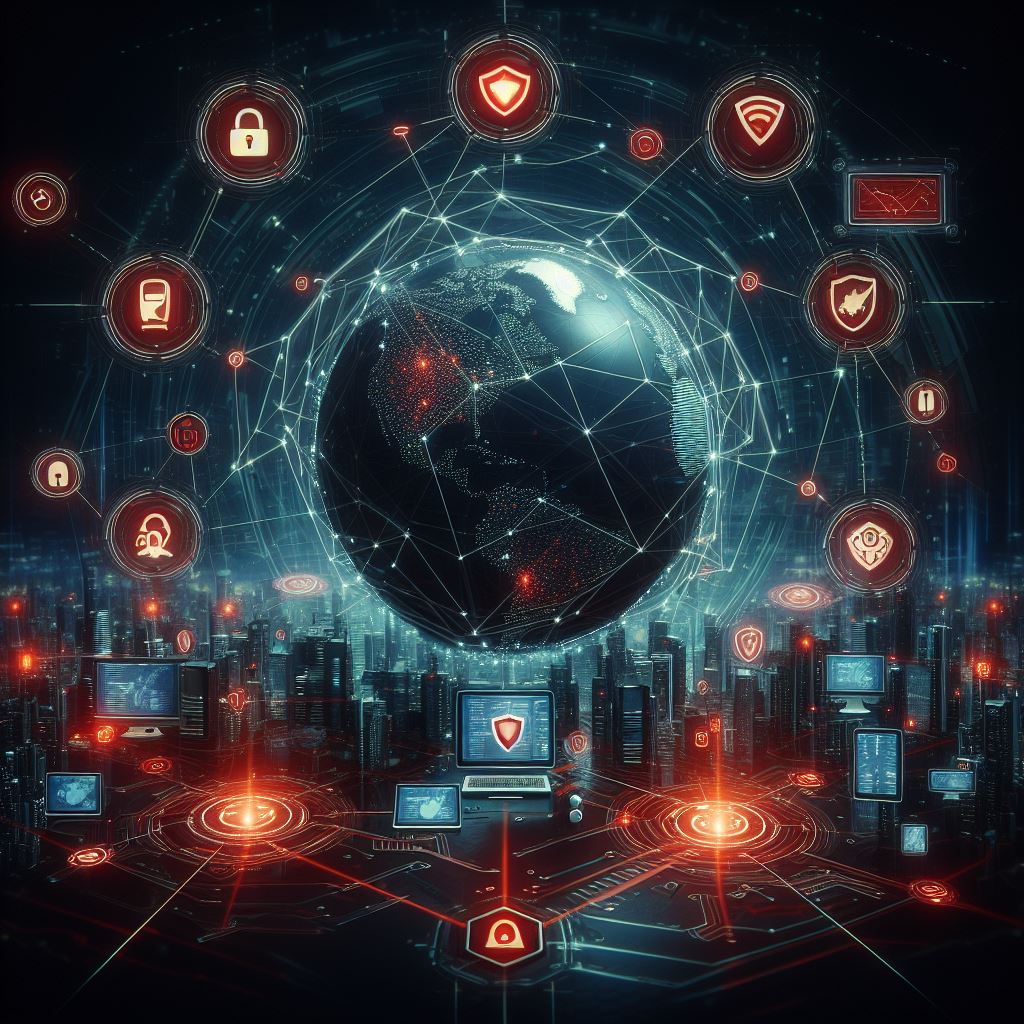

The evolving landscape of cyber threats is a constant challenge, with new threats emerging as technology advances. Cyber-attacks constantly challenge digital security, leveraging innovative techniques to breach defences and compromise systems. These attacks adapt to technological advancements, exploiting vulnerabilities in new ways to infiltrate networks, steal data, or disrupt operations.
With the recent development of AI, cyber threat actors are becoming more sophisticated. Technological innovation and changing needs have introduced new environments, devices, and software that add up to an expanding cyber-attack surface. Top trending cyber threats include ransomware, supply chain, multi-vector attacks and many more.
Here's a brief overview of some newer threats and how they're evolving:
1. AI-Powered Threats
AI-powered threats represent a new frontier in cyber-attacks, harnessing artificial intelligence and machine learning capabilities to create more sophisticated, adaptive, and damaging assaults. Cybercriminals employ artificial intelligence and machine learning to automate attacks, develop sophisticated malware, and bypass traditional security measures.
Also, AI algorithms can mimic human behaviour and patterns, aiding in creating synthetic identities for fraudulent purposes, such as accessing systems or conducting financial crimes.
Even though AI has a lot of potential applications, with its development, attackers and defenders are forced to compete with increasing levels of sophistication.
2. Supply Chain Attacks
Rather than targeting individual organizations directly, attackers are infiltrating supply chains, compromising smaller, less secure partners to gain access to larger, more valuable targets. Malicious actors may enter the supply chain to introduce compromised software or hardware, potentially leading to backdoors, data breaches, or system manipulation.
Attacks on the supply chain can disrupt the flow of goods or services, causing financial losses, reputational damage, and significant operational disruptions.
3. Ransomware Evolution
Ransomware attacks continue to evolve, employing more sophisticated tactics, such as double extortion, where attackers encrypt data and threaten to leak it, increasing the pressure on victims to pay. In recent years, some reports indicated the formation of ransomware cartels or alliances among different ransomware groups, sharing resources, tactics, and infrastructure to amplify their impact and profits. Also, some groups experimented with using cryptocurrencies and blockchain technologies as payment mechanisms, aiming to increase anonymity and secure ransom payments. These evolutions underscored the adaptability and persistence of ransomware threats, necessitating a proactive and multi-layered cybersecurity approach.
4. Crypto-jacking
There are more ways in which the cryptocurrency movement impacts cybersecurity. Crypto-jacking, for instance, is a trend in which online criminals take control of other people's computers. As mining cryptocurrencies—like Bitcoin, for example—requires enormous computer power, hackers might profit by surreptitiously using other people's systems.
5. Social Engineering and Insider Threats
Cyber attackers exploit human vulnerabilities through social engineering tactics to deceive individuals or employees, manipulating them into divulging sensitive information or performing actions that compromise security. It mainly includes phishing, baiting and pretexting-like activities.
Insider threats arise from individuals within an organization who exploit their access and privileges for malicious purposes. They can be malicious insiders with intent to harm or unwitting insiders who inadvertently cause security breaches.
Organizations are under growing pressure to improve and streamline their security architectures due to the growth of cyber threats and the corporate digital attack surface. Security teams find it challenging to stay up to speed with the increasing number of point security solutions, even while new attack routes require new protection capabilities.
Given that infrastructure security now plays a significant role in practically every firm, it would be wise for them to begin their cyber-security learning curve to become specialists tomorrow. Professionals with extensive expertise and cyber security skills are among the highest paid in the IT sector due to the increasing demand in recent years.
Organizations must continually adapt their cybersecurity strategies as cyber threats evolve, implementing robust defence mechanisms, employee training programs, regular software updates, and proactive monitoring to mitigate these emerging risks.
Follow closely and receive content about our company and the news of the current market.